In Norse mythology, the gods were not immune to the trials and tribulations of love. One of the most famous love stories of the gods is the tragic tale of Freyr and Gerðr.
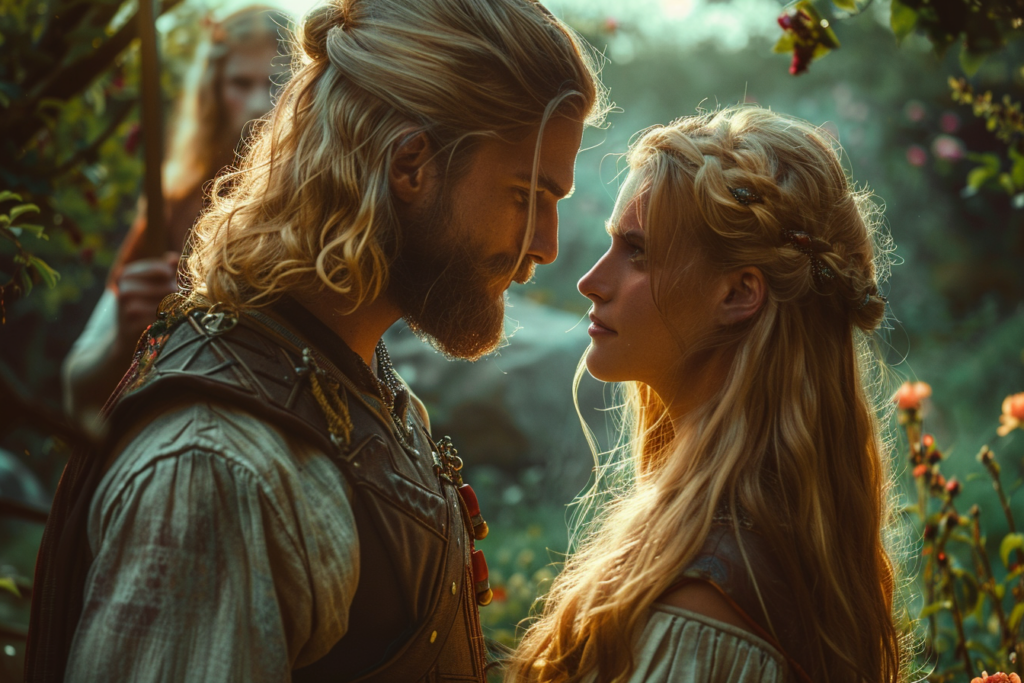
Freyr was a prominent god of prosperity, fertility, and peace, while Gerðr was a beautiful Jotun maiden. Their love story is a poignant reminder that even the gods can suffer heartbreak.
Freyr’s love for Gerðr was sparked by an innocent glance at her beauty. He fell hopelessly in love with her, but their love was not meant to be.
Gerðr was a Jotun, a race of giants that were often at odds with the gods. Despite Freyr’s best efforts, Gerðr remained distant and unresponsive to his advances. Their tragic love story is a reminder that even the gods are not immune to heartbreak and that love can be a powerful force that can bring both joy and sorrow.
The tale of Freyr and Gerðr is just one of many love stories that can be found in Norse mythology. It is a reminder that even the gods are not immune to the trials and tribulations of love. Their story has inspired countless retellings and adaptations over the years, and it continues to captivate audiences today.
The Pantheon and Characters

Freyr: The God of Fertility and Prosperity
Freyr is a Norse god who belongs to the Vanir tribe of deities. He is also an honorary member of the other tribe of Norse gods, the Aesir.
Freyr is the god of fertility, prosperity, and peace. He is also the founder of holy royal lineages, the leader of armies, and the lord of the dead in their mounds. He is the giver of sunlight and rain and all that is needed for the crops to grow.
Gerðr: The Enchanting Giantess
Gerðr is a beautiful giantess in Norse mythology who becomes a central figure in the story involving Freyr. She is the daughter of the giants Gymir and Aurboda.
Gerðr is described as enchanting and captivating. Freyr falls in love with her when he sees her beauty from his father’s hall. He sends his servant Skirnir to woo her on his behalf. Initially, Gerðr rejects Freyr’s proposals, but eventually agrees to marry him after Skirnir uses various tactics to persuade her.
Other Key Figures in the Tale
Other key figures in the tale include Odin, the chief god of the Aesir, and Loki, the trickster god.
Njord, the god of the sea, and his daughter Freyja, the goddess of love and fertility, also play important roles.
Skaði, the jötun goddess of winter and hunting, and Thor, the god of thunder and strength, are also mentioned in the story.
The Narrative of Love and Quest
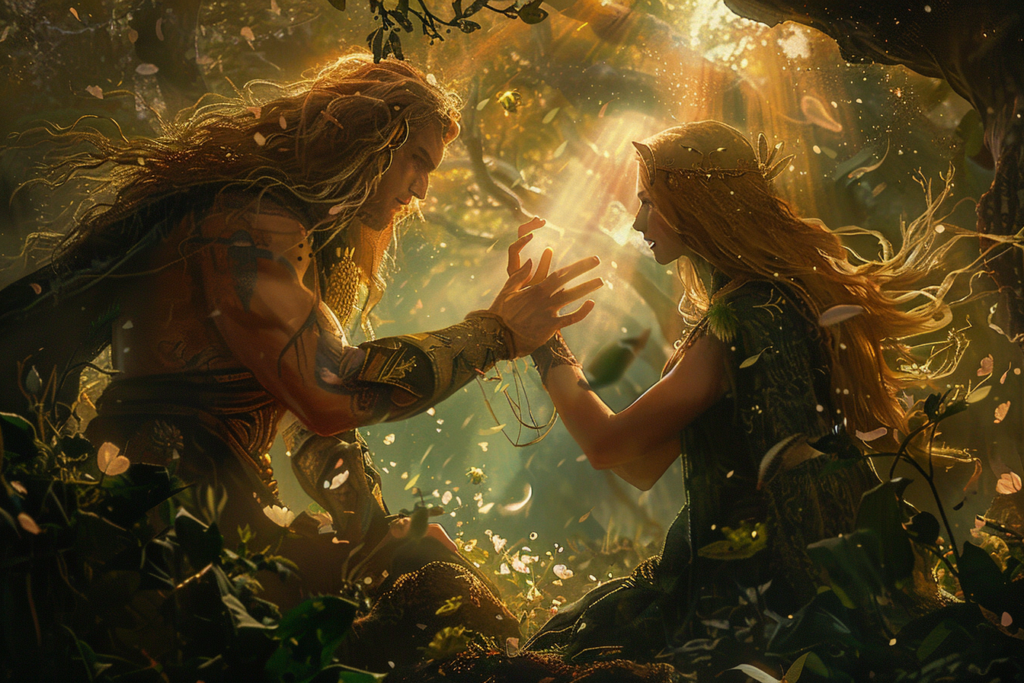
Freyr’s Longing and Skírnir’s Journey
The story of Freyr and Gerðr is a tale of love and quest that has been passed down through generations of Norse mythology.
Freyr, the god of fertility, peace, and prosperity, falls in love with Gerðr, a giantess who lives in the realm of Jotunheim. However, Gerðr is not interested in Freyr’s advances, and Freyr becomes lovesick, unable to eat, drink, or sleep.
Freyr’s servant, Skírnir, offers to help him win Gerðr’s hand in marriage.
Skírnir embarks on a perilous journey to Jotunheim, where he offers Gerðr a magic sword and other treasures in exchange for her hand in marriage.
Gerðr initially refuses, but Skírnir threatens her with the sword and eventually convinces her to marry Freyr.
The Courtship and Challenges
The courtship of Freyr and Gerðr is not without its challenges.
Gerðr’s father, Gymir, is initially opposed to the marriage, but eventually agrees to it. However, Gerðr’s brother, Beli, is not pleased with the match and challenges Freyr to a duel.
Freyr defeats Beli and the marriage proceeds.
The union of Freyr and Gerðr is a joyous occasion, but it is short-lived. Freyr gives away his magic sword, which he needs to defend himself against the giant Surtr during the final battle of Ragnarök. Without his sword, Freyr is killed by Surtr.
The story of Freyr and Gerðr is told in the Poetic Edda, a collection of Old Norse poems that date back to the 13th century.
The specific poem that tells this story is called “Skírnismál” and is part of the “Mythological Poems” section of the Poetic Edda. The story is also retold in the Prose Edda, a work of Old Norse literature written by the Icelandic scholar Snorri Sturluson in the 13th century.
Symbols and Themes
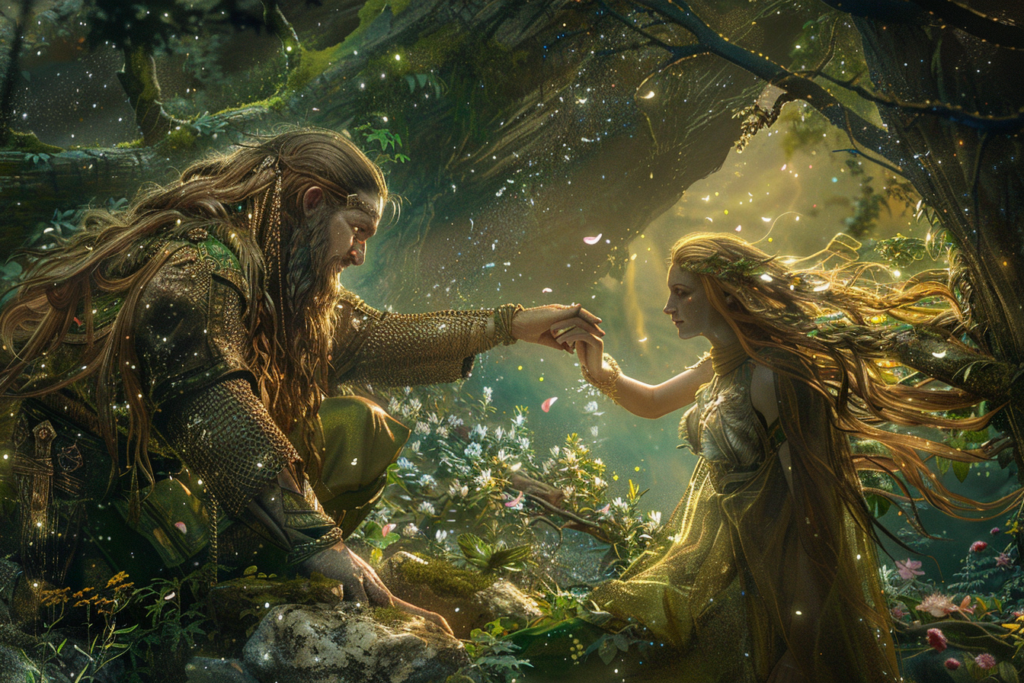
The Significance of the Ring Draupnir
The ring Draupnir is a powerful symbol in the tragic Viking tale of Freyr and Gerðr.
Draupnir, meaning “the dripper,” was a magical ring that could create eight identical rings of equal value every ninth night. This ring was a symbol of abundance and prosperity, which were the domains of Freyr, the Norse god of fertility and prosperity.
The ring also symbolized interconnectedness and balance, as the eight rings created by Draupnir represented the eight directions of the compass, and the ninth ring represented the center.
Nature, Harvest, and Fertility
Nature, harvest, and fertility were essential themes in the tale of Freyr and Gerðr.
Freyr was the god of sunshine, good weather, and male virility, and he was often depicted with a phallic symbol. He ruled over the elements that ensured bountiful harvests and plentiful crops, making him a central figure in agrarian societies.
Gerðr, on the other hand, was a giantess of the frozen land, representing the harshness of nature. The interplay between these two themes of nature and fertility created a balance and harmony that was crucial to the Viking way of life.
The Interplay of Love and War
The tragic tale of Freyr and Gerðr also explored the interplay of love and war.
Freyr, a prominent god of prosperity, fertility, and peace, fell hopelessly in love with the beautiful Jotun maiden, Gerðr. Their love story was one of the most romantic and tragic in the Norse myths.
The love between Freyr and Gerðr was pure and innocent, but it was ultimately doomed by the forces of war.
The giants, who were the enemies of the gods, demanded that Freyr give up his magical sword in exchange for Gerðr’s hand in marriage.
Freyr, blinded by love, gave up his sword, and as a result, he was unable to defend himself in the final battle between the gods and the giants. The tragic end of their love story highlighted the interconnectedness of all things and the importance of balance and harmony in the Viking worldview.
Cultural Impact and Legacy

Literary Influence and Adaptations
The tragic love story of Freyr and Gerðr has been a popular subject in Norse mythology and literature. It has inspired numerous adaptations and retellings over the years.
One of the most famous retellings of the tale is found in Snorri Sturluson’s “Gylfaginning,” which is part of his “Prose Edda.” In this version of the tale, Freyr falls in love with Gerðr, a giantess, and sends his servant Skírnir to woo her. Skírnir uses magic to convince Gerðr to marry Freyr, but in exchange, Freyr must give up his magical sword.
The story of Freyr and Gerðr also appears in the poem “Lokasenna,” where Loki mocks Freyr for his love of a giantess. The tale has been adapted into modern literature as well, such as Henry Adams Bellows’ translation of the “Poetic Edda,” where the story is told in “Skáldskaparmál.”
Symbolism in Art and Literature
The tale of Freyr and Gerðr has also had a significant impact on art and literature. The story has been depicted in many different forms. These include paintings, sculptures, and even films. In many of these depictions, Freyr is shown holding the golden apples that he gave to Gerðr as a token of his love.
The story has also been used as a symbol of love and sacrifice in literature. The tragic ending of the tale has been seen as a representation of the inevitability of death and the sacrifices that people make for love. The tale has been used to explore themes of love, loss, and sacrifice in modern literature and film.
The tragic love story of Freyr and Gerðr has had a significant impact on Norse mythology and culture. It has inspired numerous adaptations and retellings, and has been used as a symbol of love and sacrifice in art and literature. Its legacy continues to influence modern culture and inspire new generations of artists and writers.


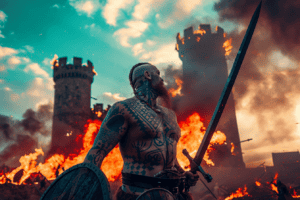
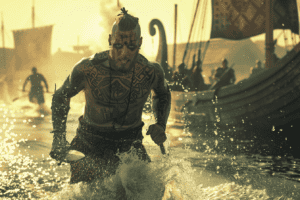






Add Comment